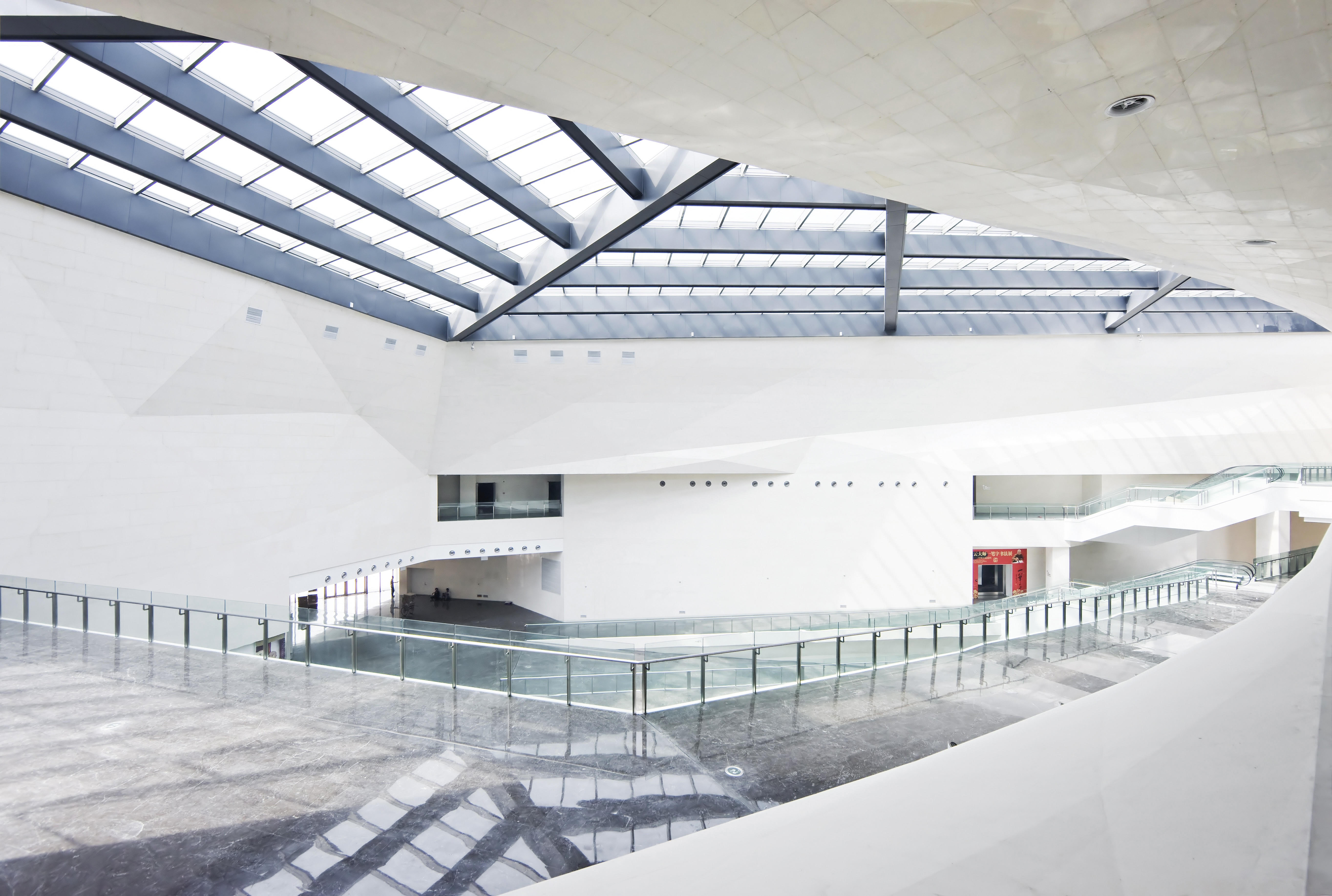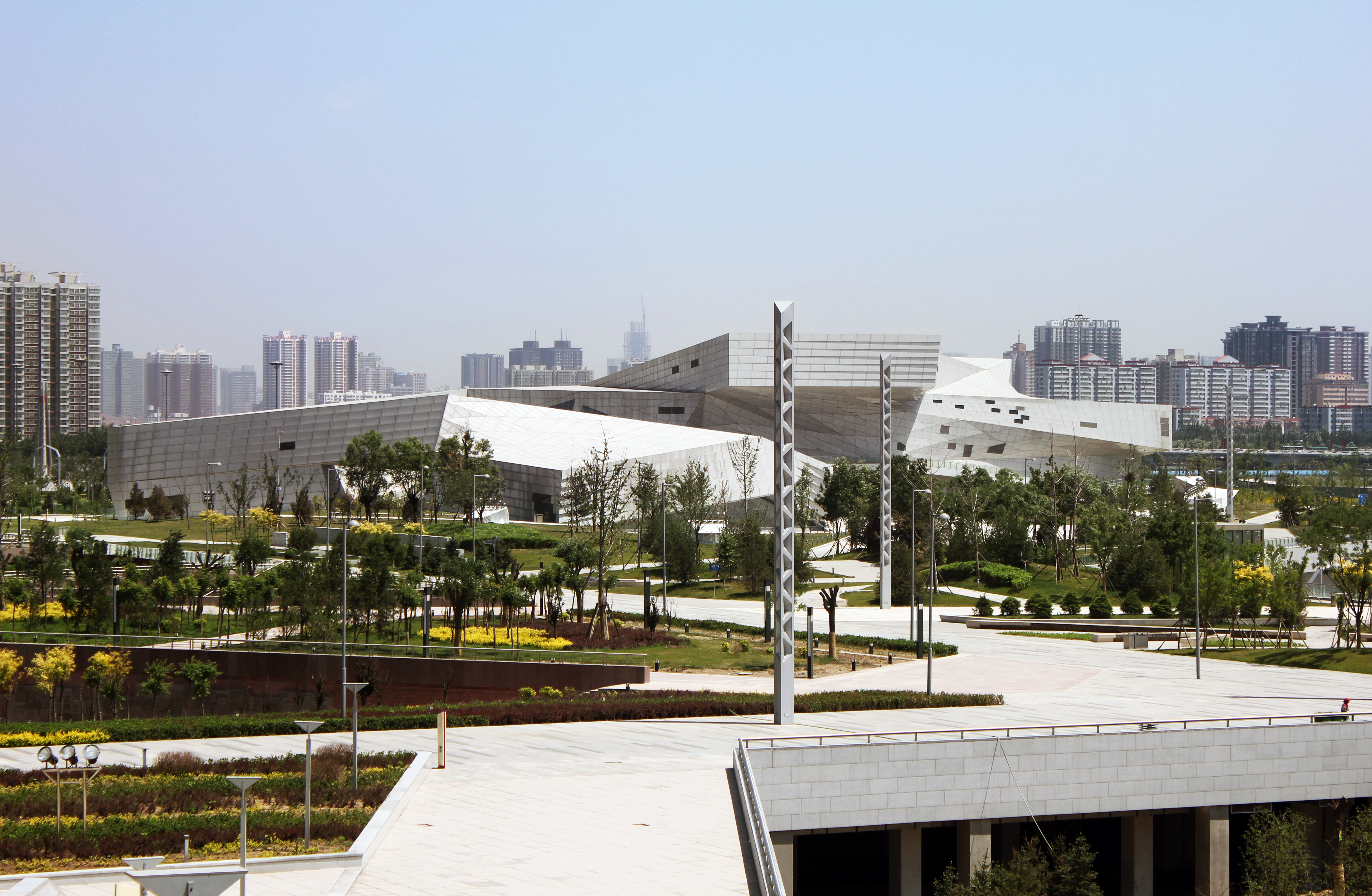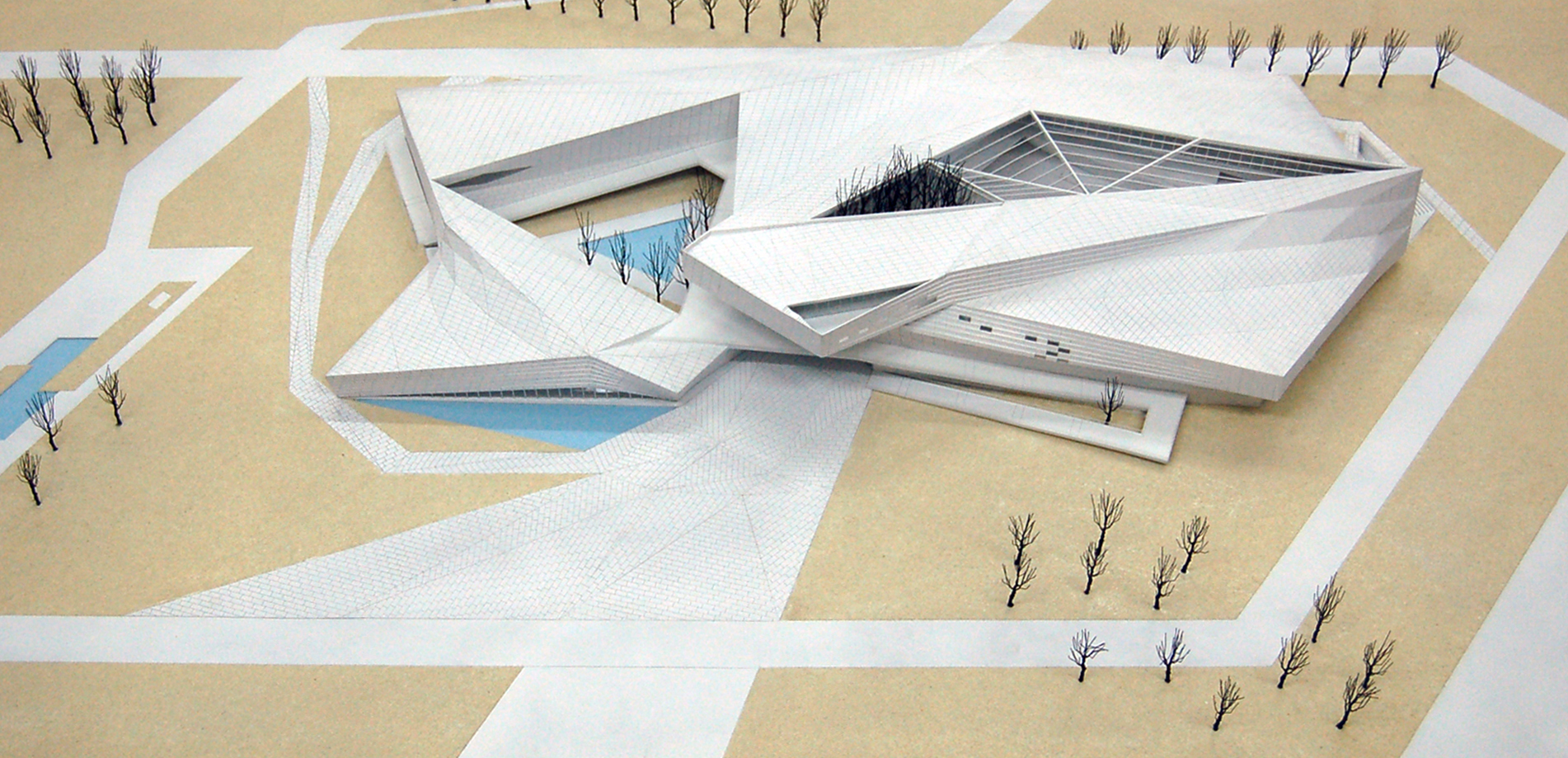The Taiyuan Museum of Art works as a cluster of buildings unified by continuous and discontinuous promenades both inside and outside. The building responds to the urban parkscape in which it is set; visitors are encouraged to pass through the building while not entering into the museum itself. An exterior ramp threading through the building connects the heterogeneous hardscapes, lawns and sculpture gardens.
The integration of building and landscape registers multiple scales of territory ranging from the enormity of the adjacent Fen River and parkway to the intimacy of the museum’s own particular spatial episodes.
Inside, the security of museum space is maintained by a highly controlled interface between gallery and non-gallery programs including an auditorium, bookstore, restaurant, library, education center, and administrative wing. The individual sets of elevators and cores are distributed to guarantee easy access and easy divisibility between zones regulated by different schedules and rules of access.
At the garage level, the services are intricately planned in order not to interfere with parking lots for staff and public. The museum galleries are organized to ensure maximum curatorial flexibility. The galleries can be curated as a single, spiraling itinerary suitable for large chronological exhibitions or as autonomous clusters of exhibitions that are structured independently.
The placement of ramps and the proportional expansion and contraction of spaces provide the means of wayfinding. The building provides visitors the freedom either to follow a predetermined chronological sequence or to skip from one set of galleries to another, in a nonlinear fashion. People ascend ramps that spiral around the atrium, weave in and out of galleries, and descend an open staircase that bypasses several levels on its way down to the loop of galleries that surround the large sculpture courtyard.
The facades are composed as hyperbolic parabolas (hypars) which appear to be derived from tilted and twisted parallelograms which rise and fall along with the landscape and exterior ramps. The façade hypars are translated into folded plates. A patchwork of quad panelized hypars span between the facades.
Altogether, the building reads as a thick, variably curved surface, the folded plate edges of which appear to articulate layers. The concrete structural base of the building is integrated with the parking surrounded on three sides by sloped landscapes rising from waterways. The building is steel framed, culminating in vierendeel trusses supporting the fifteen meter cantilever of the restaurant. The entire façade and roof are clad in light weight honeycomb panels with stone veneer that produce an evocative and elusive material effect. On the one hand, the panels are reflective as if they are metal and yet are too perfectly flat to be. On the other hand, their flatness suggests they are clad in stone, though they are seemingly too large to be. The panels clearly possess properties of both materials that are mutually contradictory.
Location: Shanxi Sheng, China
Client: Taiyuan City Government
Size: 32,500 sq. m.
Schedule: Winner of the international competition 2007;
Design 2007-2010;
Construction 2010-2013
Team: Preston Scott Cohen, Inc., Cambridge, MA Preston Scott Cohen (architectural design)
Amit Nemlich (project architect)
Collin Gardner, Hao Ruan, Joshua Dannenberg (project assistants)
Yair Keshet (model) Architecture Design and Research Institute of South East University , Taiyuan (architect of record)


















